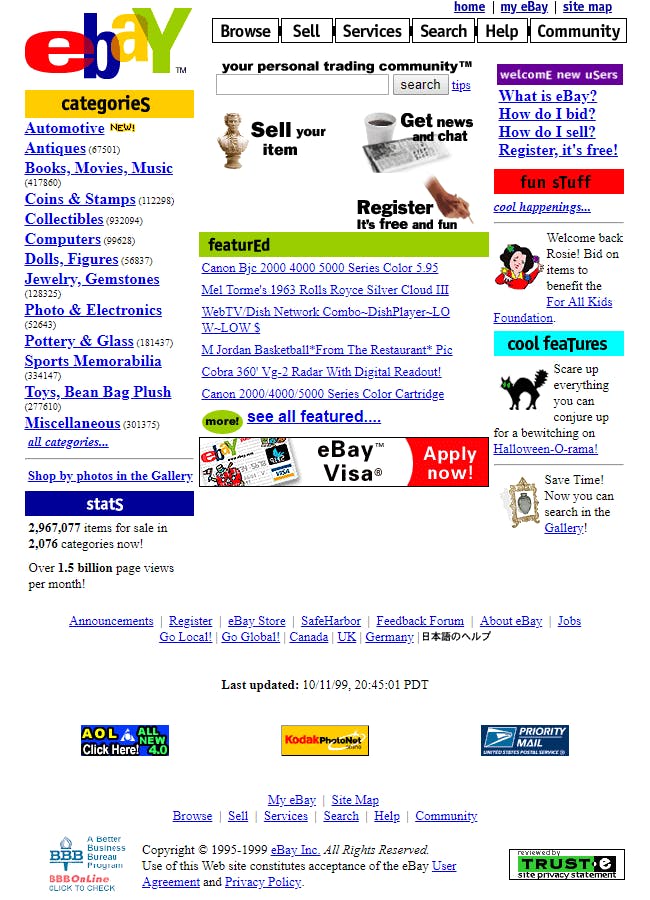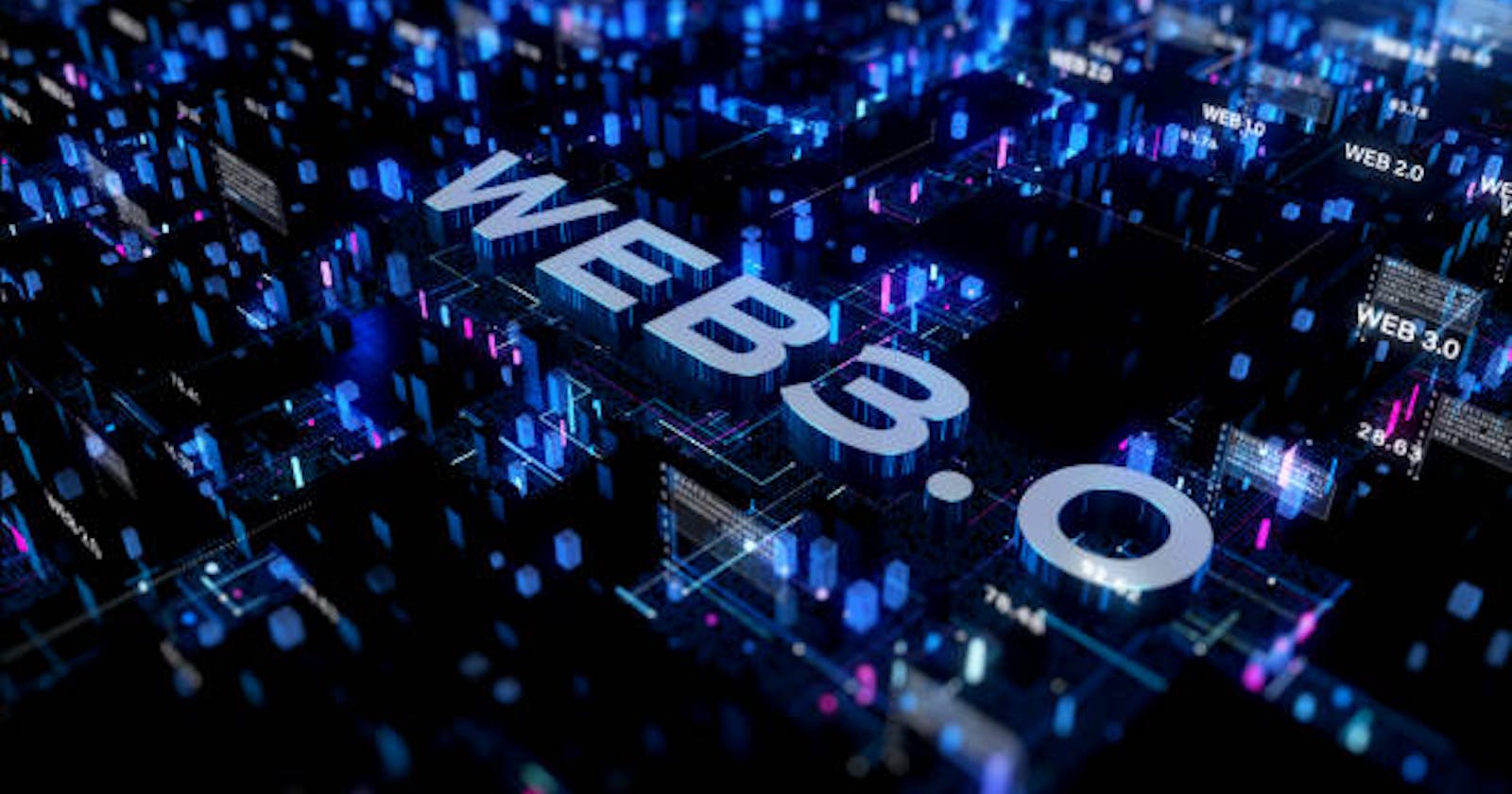Introduction
Jill was a student of Biological science and passionate about staying up to date on new technologies. She was particularly interested in web 3.0, a new technology taking the internet by storm, so she began searching for information about web 3.0.
If you are like Jill who wants to learn about web 3.0, then this article is for you.
In this article, you will learn the following:
Brief History of the Web.
Web 1.0
Features of web 1.0
Web 2.0
Features of web 2.0
Web 3.0
Importance of web 3.0
Features of web 3.0
Brief History of the Web
In 1989, British computer scientist Tim Berners-Lee invented the World Wide Web while working at CERN, the European Organization for Nuclear Research in Switzerland. Berners-Lee envisioned a system in which researchers could easily share and access information from any computer around the world.
The first web page, which contained information about the World Wide Web project, was created in 1991. The web continued to grow rapidly throughout the 1990s, as more and more people began using it to share information and communicate with each other. The first web browser, called WorldWideWeb, was developed by Berners-Lee in 1990, and the first popular web browser, Mosaic, was developed in 1993.
By the late 1990s, the web had become an integral part of everyday life for millions of people around the world. E-commerce sites like Amazon and eBay were launched.

Web 1.0 (Read-only)
Web 1.0 refers to the first generation of the World Wide Web, which was introduced in the early 1990s and lasted until the mid-2000s. In this era, the web was a “read-only” platform, where users could search for information and read it but couldn't interact with the content.
During this period, the web was largely a one-way street where static content was created and published by a limited number of individuals or organizations.
Websites were primarily composed of static HTML pages and were focused on providing information to users, rather than facilitating interaction or user-generated content.
Search engines like Yahoo and AltaVista were the primary means of discovering content on the web, and users navigated websites using links or bookmarks. Online shopping and e-commerce were in their infancy, and online transactions were often conducted using insecure and unreliable methods.
Features of Web 1.0
Some key features of Web 1.0 include:
Static Web pages: Web 1.0 websites were typically static, meaning that the content of the page was fixed and could not be easily updated or changed. HTML was the primary markup language used to create static pages.
Limited interactivity: Web 1.0 websites were largely passive, with users limited to viewing content on the page. There was little interactivity or engagement with the user.
Information-oriented: Web 1.0 websites were mainly focused on providing information to users, rather than enabling user-generated content or social interactions.
The key technologies comprises were ;
HyperText Markup Language (HTML).
HyperText Transfer Protocol (HTTP).
Uniform Resource locator (URL).
Overall, web 1.0 was a foundational stage in the evolution of the web, providing the groundwork for the more interactive and user-centric web 2.0 that followed.

Web 2.0 (Read and Write)
Web 2.0 marked a shift in the way the web was used. The era of Web 2.0, which is still ongoing, began in 2004 with the arrival of social media. The web moved from being a one-way, read-only platform to a two-way, read-write medium, where users could actively contribute and collaborate.
Social media sites like Facebook are a good example of this change. While traditional websites in web 1.0 would just have information about one person, on Facebook, people can connect and interact by posting updates, sharing things, and leaving comments. Web 2.0 includes social networking sites, wikis, blogs, video and photo sharing sites, cloud computing services etc. This interaction is what makes Web 2.0 different.
Features of Web 2.0
Some key features of Web 2.0 include:
User-generated content: Web 2.0 is characterized by the ability for users to create, share, and interact with content on the web. This includes everything from blogs and wikis, to social media platforms like Facebook and Twitter.
Social networking: Web 2.0 is also marked by the rise of social networking platforms that allow users to connect, share information, and form communities. Examples include Facebook, LinkedIn, and Instagram.
Collaboration: Web 2.0 has enabled collaboration on a scale that was previously impossible, with tools like Google Docs and Dropbox allowing users to work together on documents and projects from anywhere in the world.
Multimedia content: With the advent of Web 2.0, websites became much more visually appealing, incorporating multimedia elements like images, videos, and audio files.
Interactive interfaces: Web 2.0 sites feature interfaces that are more interactive and engaging, with features like drag-and-drop functionality, AJAX, and responsive design.
Personalization: Web 2.0 sites often offer personalized experiences for users, based on their preferences, search history, and other data.
Cloud computing
Data and application mashups
Rich internet applications (RIA)
Really Simple Syndication (RSS)
Application programming interfaces (APIs)
HTML5 and CSS3
Microformats
In Web 2.0, is data centralized, companies can keep track of users' data and use it without their knowledge or consent. The government can also control or shut down programs if they don't agree with what's being said. Banks can restrict access to money during times of trouble, which is where Web 3.0 aims to make improvements.

Web 3.0 (Read-Write-Own)
Web 3.0 refers to the next generation of the internet but is already in use, which aims to be more decentralized, user-centric, and secure. It is built on new technologies like blockchain, peer-to-peer networks, and decentralized computing.
Unlike the current web (Web 2.0), where most data is stored on centralized servers controlled by a few big companies. Web 3.0 is designed to distribute data and control across the network to give users more control over their personal information and data. Decentralization is the core tenet of Web 3.0.
This next generation of the internet, which will enable websites and apps to work more intelligently by using advanced technologies like Artificial intelligence (AI), Machine Learning (ML), and more. However, it's still in the early stages of development and could take 5-10 years to complete. In the meantime, we may see a transition phase called Web2.5, where current platforms gradually incorporate Web3 protocols.
Why is web 3.0 important?
Web 3.0 aims to create a more decentralized internet by utilizing blockchain technology, which allows for peer-to-peer interactions without the need for intermediaries. This can increase privacy, security, and transparency, as well as reduce the influence of large corporations and governments.
In Web 3.0, users own and control their data, and can choose to share it with others or participate in decentralized applications and services. Transactions are processed through smart contracts on the blockchain, ensuring that they are secure, transparent, and tamper-proof.
Also, Web 3.0 is expected to create new business models and revenue streams, such as tokenization and decentralized finance (DeFi), which can potentially disrupt traditional industries.
Features of Web 3.0
Web 3.0 is still in its early stages of development and has yet to be fully realized. However, its key features include:
Decentralization: Web 3.0 leverages decentralized technologies like blockchain to create a distributed database that is not controlled by any single entity, making it more secure and resistant to censorship and downtime.
User-centricity: In Web 3.0, users have complete control over their data and online identity, instead of having it controlled by centralized companies. This allows users to choose who they share their data with.
Interactivity: Web 3.0 is designed as an open integration network, where different services and applications can communicate with each other to offer a seamless user experience.
Security: With cryptographic technologies and decentralized consensus mechanisms in place, Web 3.0 is more secure than Web 2.0, protecting users' data and privacy.
Tokenization: Web 3.0 introduces tokenization, which allows for the creation of digital assets that can be bought, sold, and traded on the network.
With the integration of Semantic Web and NLP technologies, Web 3.0 will allow machines to understand information like humans, leading to advancements in fields such as medical research and materials science. The use of machine learning and AI will also play a crucial role in delivering faster and more relevant outcome
Conclusion
As Web 3. 0 continues to evolve, we can expect to see more innovations that help to create a more equitable, secure, and user-centric internet. While Web 3 is still in its early stages of development, it has the potential to transform the way we interact and transact.
